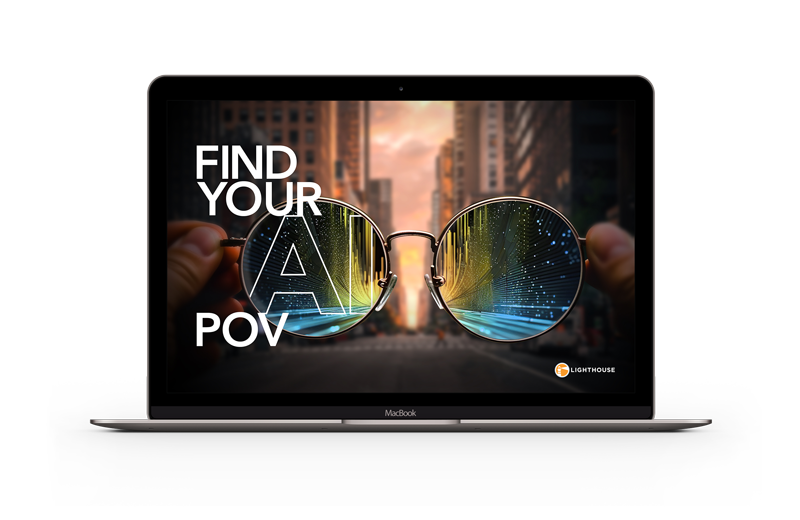
How to Recognize and Work with Modern Data in eDiscovery
August 9, 2024
By:
New technology leads to new sources and forms of data. This leads to new questions about how to preserve, collect, process, review and produce it during litigation.
In eDiscovery circles, we call this data “modern data.”
Today, questions about modern data are focused on AI. But innovation is cyclical. A few years from now, another technology breakthrough is going to raise the same questions all over again.
Since new iterations of modern data are always around the corner, it pays for legal professionals to prepare by developing new skills and habits.
Namely, you need to learn how to recognize modern data, so you can be sure to handle it with care.
In this post, we’ll help you do that by:
- Summarizing key aspects of modern data.
- Providing a checklist for you to assess the data types and sources you work with today—and in the future.

What “modern” means: aspects of modern data for eDiscovery
Modern data differs from traditional data types in many ways, but three aspects are most significant in eDiscovery.
Modern means new data types
Remember how disruptive Slack and Teams were when they first arrived on the scene? No one had ever used short-form message threads as evidence before. Attachments and links within those messages only complicated it further.
It was challenging because these platforms introduced new and different data types. That’s one of the easiest ways to recognize modern data: Does it manifest in a file or other artifact that you’ve dealt with before? Or is it unique and unusual?
Modern means it has little or no legal precedent
With traditional data, you can determine how to process and produce it based on existing case law.
With modern data, those precedents are still being set. Sometimes cases involving a new technology haven’t reached the courts yet. But often you may find some rulings on record, however they’re inconsistent, so the guidance isn’t clear. It can take multiple cases, over months or possibly years, for courts and litigants to establish consensus and clarity around modern data.
In a recent post, I did a deep dive on legal precedents for modern data, including examples of case law regarding modern attachments and data retention.
Modern means eDiscovery technology hasn’t caught up yet
Emails, attachments, Slack messages, Office documents—these fall right in the wheelhouse of many eDiscovery solutions.
AI queries and responses—not so much.
If your eDiscovery solutions and workflows aren’t primed to handle a data type cleanly and reliably, that’s a clue you may be dealing with modern data.
Checklist for evaluating your data
Those three aspects give you a general idea of what makes modern data modern.
But when you’re evaluating data and technology for an actual case, it helps to get more granular.
Use the checklist below to help you assess your current data and sources. The more boxes you check, the more “modern” your data is. Take special consideration when collecting, processing, and reviewing it.
1. Data creation:
[ ] Is the data created in cloud-based applications?
[ ] Are multiple users involved in data creation?
[ ] Does the data involve real-time collaboration?
2. Data storage:
[ ] Is the data stored in cloud repositories?
[ ] Are there multiple storage locations for the same data?
[ ] Does the storage system use encryption or other security measures?
3. Data sharing:
[ ] Can the data be easily shared across platforms?
[ ] Are there built-in sharing features within the application?
[ ] Does sharing the data create new versions or copies?
4. Data format:
[ ] Is the data in a non-traditional format (e.g., chat messages, video calls, live meetings)?
[ ] Does the data format change when exported?
[ ] Are there multiple data formats within a single source?
5. Data volatility:
[ ] Does the data change (i.e., is it rewritten, revised, or commented on) regularly or often?
[ ] Are there automatic deletion or archiving processes?
[ ] Can users easily modify or delete the data?
6. Legal and compliance considerations:
[ ] Are there specific regulations governing this data type?
[ ] Is there established case law for this data source?
[ ] Do licensing agreements restrict data export or use in legal proceedings?
Continue developing your awareness and habits around modern data
Today we’re grappling with AI. But tomorrow is bound to bring a new wave of technology with new eDiscovery considerations.
Keep using this checklist to inform how you approach new and challenging data. You can also check out our free eBook for more help defining modern data, recognizing it, and calibrating your approach when it comes your way.
And for more stories about how Lighthouse is helping clients protect and manage data, explore our information governance solutions.







